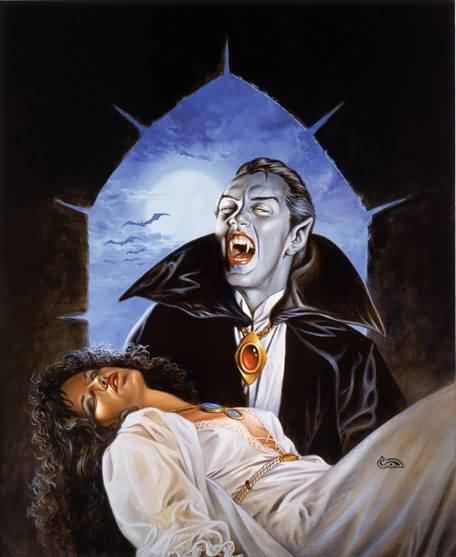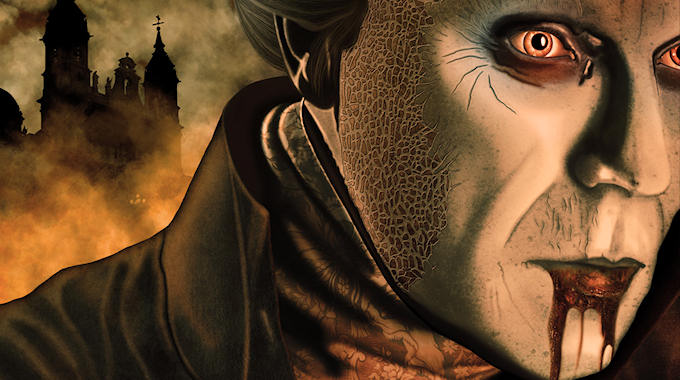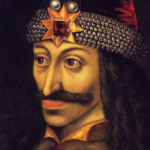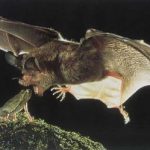
According to the classical definition that reigned in the middle-age, a vampire is an animated corpse that survives by drinking the blood of the living. It also has a demonic nature and is a servant of Satan, dedicated to spreading its evil throughout the world. Bram Stocker added many desirable traits to the vampire, and the myth was later explored and refined by numerous artists and philosophers.
The body of a vampire is technically dead by human standards. It can be said that a vampire’s body is in a state of arrested decay, animated by a supernatural force or spirit residing in its corporeal form, and kept vital by some magical energy that some refer as ichor.
Vampires usually appear as “normal” humans do, unless they are aroused by bloodlust or enraged. In such cases, the appearance of two, reticulating canine-like fangs may be seen; accompanied by red eyes and a rather predacious countenance.
Vampires to do not cast their reflections on mirrored surfaces (although they do cast shadows). Their images cannot be captured on film, videotape, or digital video. Likewise, the sound they make (vocal or otherwise) cannot be captured on either digital or analog recording devices.
The vampire requires fresh human blood for sustenance. Human blood is the preference of all vampires, although they can sate themselves on lower mammalian forms of life for short periods of time. New or “young” vampires need to feed once every two nights in order to sustain their existence.

The necessary amount of human blood consumed during feeding varies between one-half and one full quart. Some “older” vampires and Vampire Regents can resist their bloodlust and survive for longer periods without feeding; sometimes over a span of several weeks to a whole month.
However, a vampire deprived of viable sustenance for protracted amounts of time will rapidly “age” until it reaches its actual age – ordinarily proving to be fatal, as most vampires are older than the average human lifespan. In theory then, it is possible to “starve” a vampire into destruction. The inherent flaw in this method of destroying a vampire is that the vampire hunter may have to endure while waiting for what could be days or weeks.
Nests
Although there are many instances of solitary vampires (i.e. – vampires that operate and travel alone), these creatures are also known to cohabit with one another, forming what is known among vampire hunters as a “nest”. There can be any number from 2 – 20 vampires in a single nest, usually controlled by either a vampire of greater power (the eldest) or a Vampire Regent.
Perhaps the most popular vampire in history was Count Dracula (Vlad “Tepesch” Dracul), the former 15th Century prince of Transylvania and Wallachia. Regardless of his actual origins, Dracula was certainly the most powerful of all vampires on record. The Count was reputedly destroyed by vampire hunters Abraham Van Helsing, Jonathan Harker, and others in the early 1890s; although his remains have yet to be discovered. In 1931, an expedition excavated his tomb and final resting-place, revealing it to be empty.








